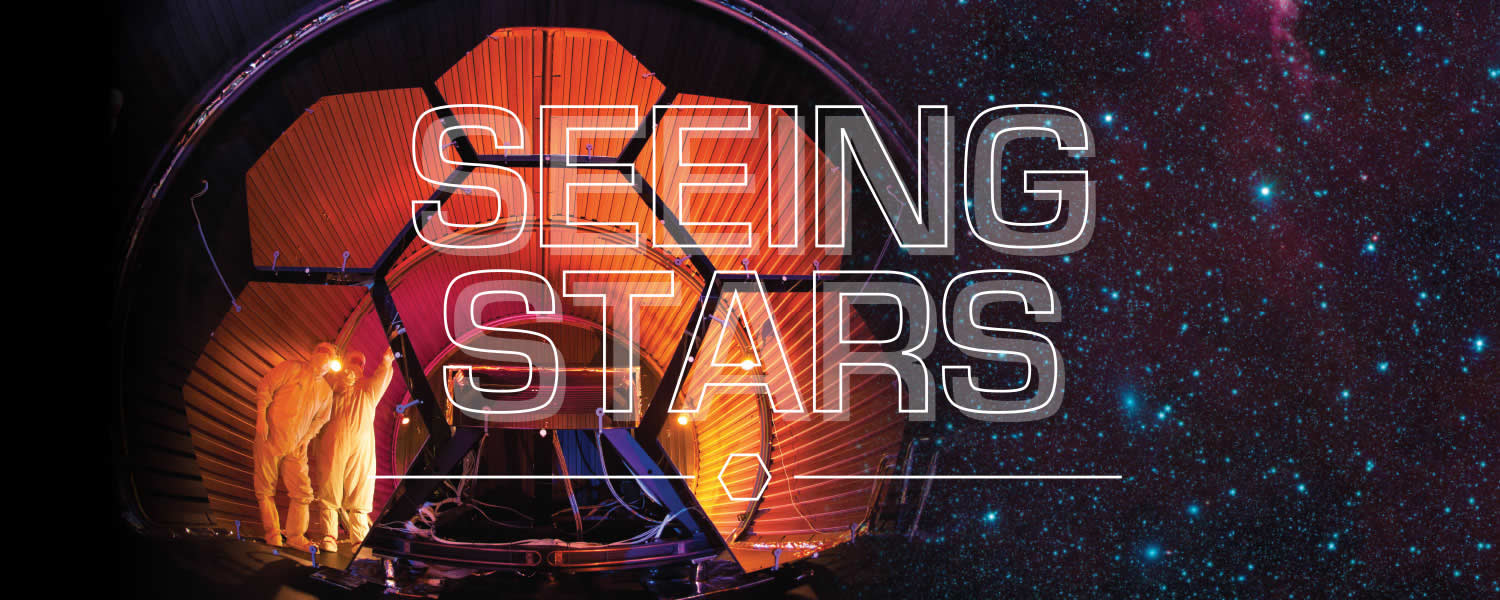Seeing Stars
Big-picture thinking helps map a path toward a better view of the early universe.
It takes a lot to send a space telescope a million miles from Earth. Billions of dollars. Years of hard work. A dedicated team of scientists and engineers. Attention to many, many details.
The task only becomes more complex when it involves the most powerful space telescope ever built. Just ask Allison Barto ’98, who has been working toward the 2018 launch of the James Webb Space Telescope (JWST) since 2002.
For the first 10 years, the physics alumna and JWST program manager at Ball Aerospace and Technologies Corp. was a systems engineer for the international collaboration led by NASA. Barto helped design the optical systems for the space-based observatory that will study the formation of galaxies, stars and planets in the early universe.
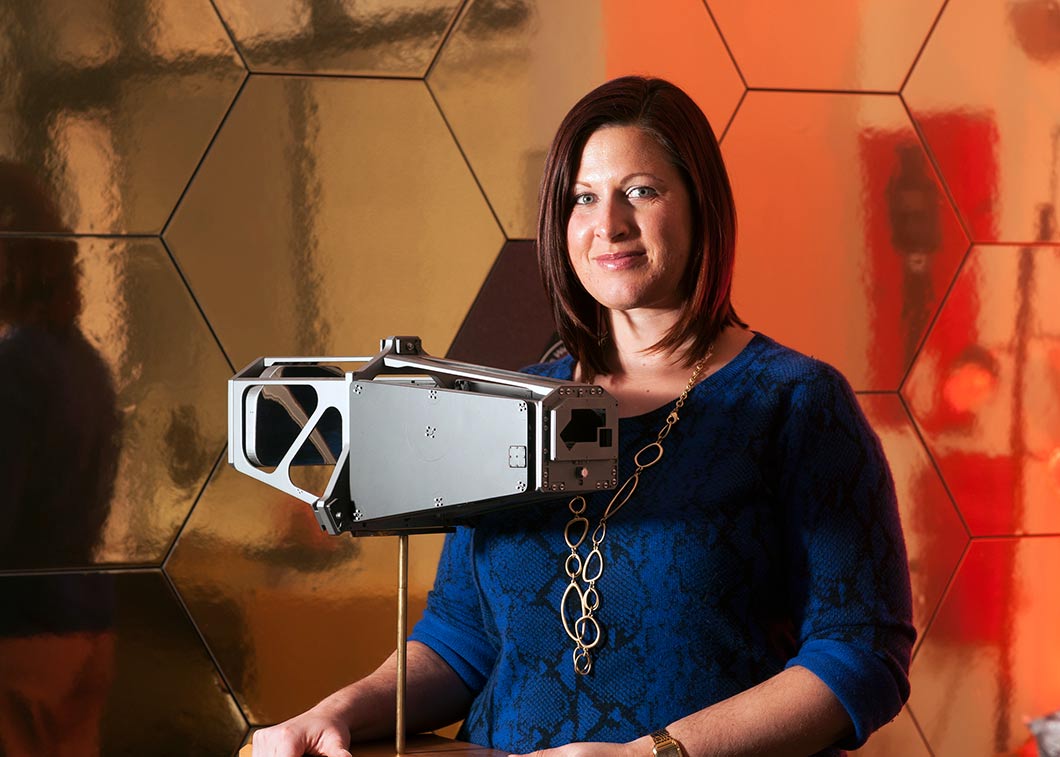
Now, as her company fulfills its role as primary provider of the mirrors, positioning actuators and controls needed to focus on distant objects, Barto is instrumental to ensuring that JWST’s optical systems will perform as required. She heads the team delivering the telescope’s optical assemblies to NASA’s Goddard Space Flight Center as part of Northrop Grumman’s Prime Contractor team and has been responsible for seeing the mirror manufacturing and testing process through a 14-stop, 11-state journey.
“I love the complexity of the project—its scale, how much new technology we had to develop. The more complicated something is, the more fun it is for me,” Barto says. “My work allows me to combine my passion for solving hard problems and my background in astrophysics to a program that is going to expand our knowledge of the universe in ways we can’t predict today.”
My work allows me to combine my passion for solving hard problems and my background in astrophysics to a program that is going to expand our knowledge of the universe in ways we can’t predict today.
– Allison Barto ’98
The launch of the Hubble Space Telescope 25 years ago demonstrates why getting the optics right is essential. Once in orbit, Hubble first provided images that were blurry. NASA discovered that a slight flaw in the telescope’s primary mirror was distorting the view—a problem that took nearly four years to fix and required repairs never undertaken in space before.
As Hubble’s successor, JWST will feature a much larger primary mirror—it will span more than 21 feet—and will offer both a wider field of view and higher-resolution images. Infrared technology and a larger light-collecting area will allow the telescope to take a closer look at the early universe, the formation of the first galaxies and the dust clouds where stars and planetary systems continue to form. Its optical systems must be not only precise but also able to withstand the harsh conditions of space. That calls for the 18 hexagonal segments of JWST’s primary mirror to function together properly at -370 degrees Fahrenheit.
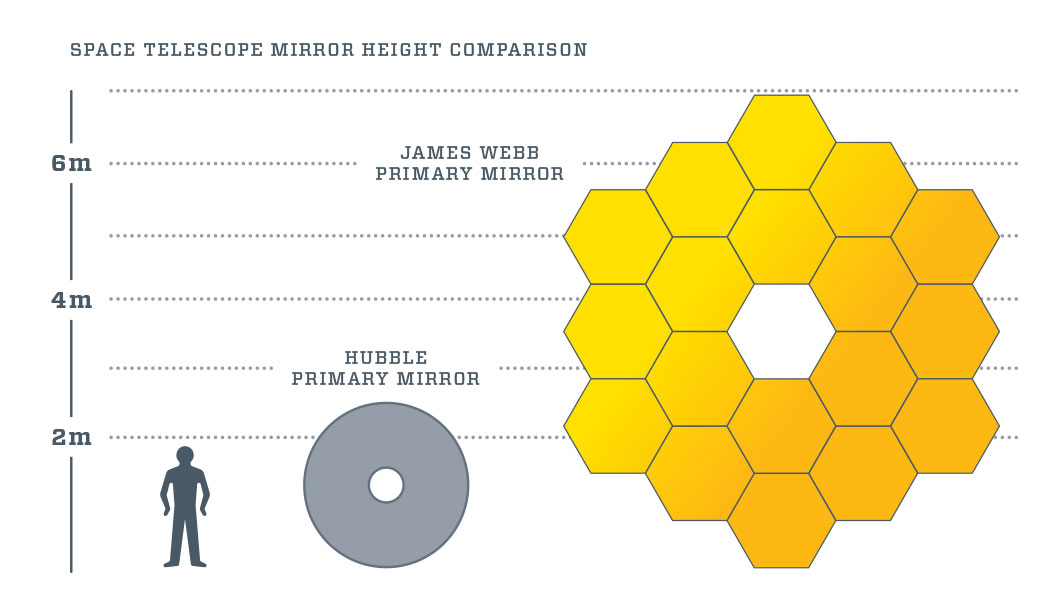
The last requirement presents a major challenge because the mirror segments will be folded up, fitted onto a rocket for launch and then reassembled in space. She explains, “We can test each mirror segment very well, but we can’t test the full aperture of the integrated telescope during ground testing. NASA has a philosophy of ‘test as you fly.’ You need to have an exact configuration to be certain it meets the requirements in space. In this case, it was impossible to test the exact way it’s going to fly. But it’s got to work in flight since there is no way to fix an error when the telescope is in orbit at L-2 nearly one million miles away. So how do we give ourselves that confidence? I pulled together a roadmap to show how we can utilize testing at various levels of integration to build and validate a model of the system with the accuracy necessary to show we will meet science requirements after on-orbit commissioning. Through a series of detailed component tests and key system-level cross check tests we were able to show the community that the performance uncertainty at launch will be sufficiently low.”
Barto considers that testing and verification roadmap her greatest contribution to the project. The work also earned her the Women in Aerospace Achievement Award in 2014.
“A lot of people make amazing contributions to the industry, and I was honored to be mentioned among them,” says Barto. “While the stimulating work provides all the gratification I need, I do think it’s important to have opportunities to highlight women in the field to help women and young girls have a window into success and a counterpoint to all the male examples.”
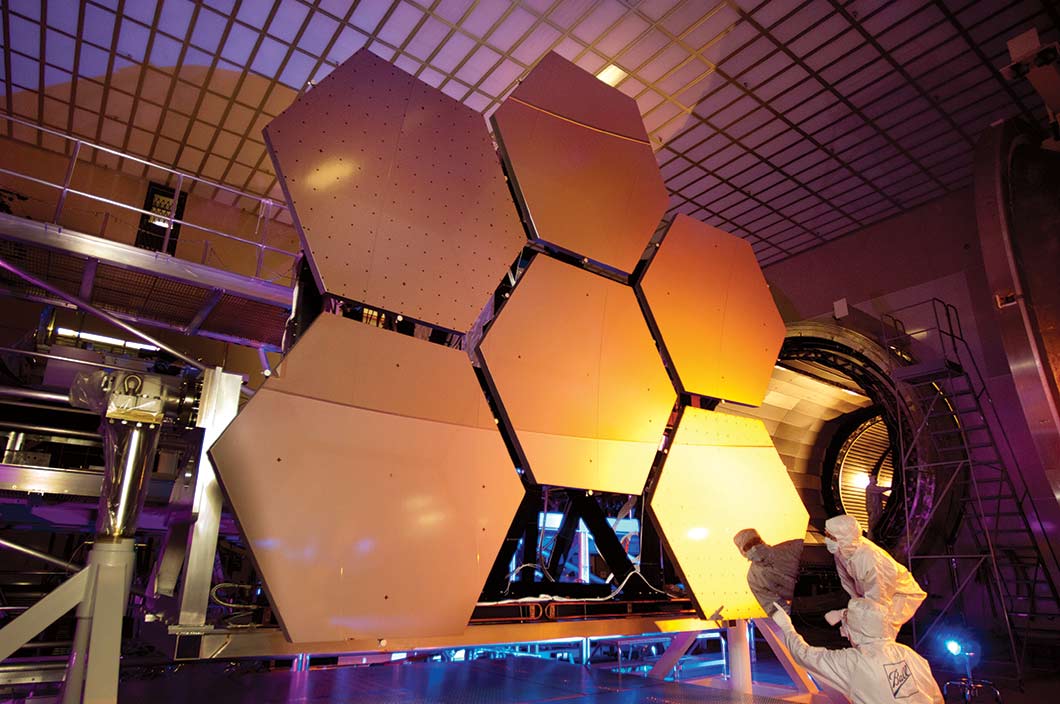
When Barto was a young girl, she imagined a different career for herself. She recalls being a 9- year-old on a family trip to Mount Rainier, listening to a park ranger talk about the formation of stars. Barto says, “I decided then that I should get a PhD in astrophysics. That became my singular goal, and it’s why I went to Mudd.”
Barto’s plans shifted during her senior year after a professor helped her land a summer position at NASA’s Jet Propulsion Lab. She says, “That opened my eyes to what else could be out there. My original plan was to be on the science side of astrophysics, and I’m glad I got an undergraduate physics degree. It teaches you how to think and solve problems you may not have approached before. But I realized engineering was a better fit for me. I really value working as part of a large, diverse team with experts in a wide variety of disciplines. Working in aerospace was a good way to marry my passion for space with work in an environment I like. We’re always building a ‘first of a kind,’ so I’m always learning something new. In fact, most of the systems engineers we have on JWST are big-picture thinkers with a physics background. It was my passion for getting my arms around the whole system that eventually led me from systems engineering to management.”
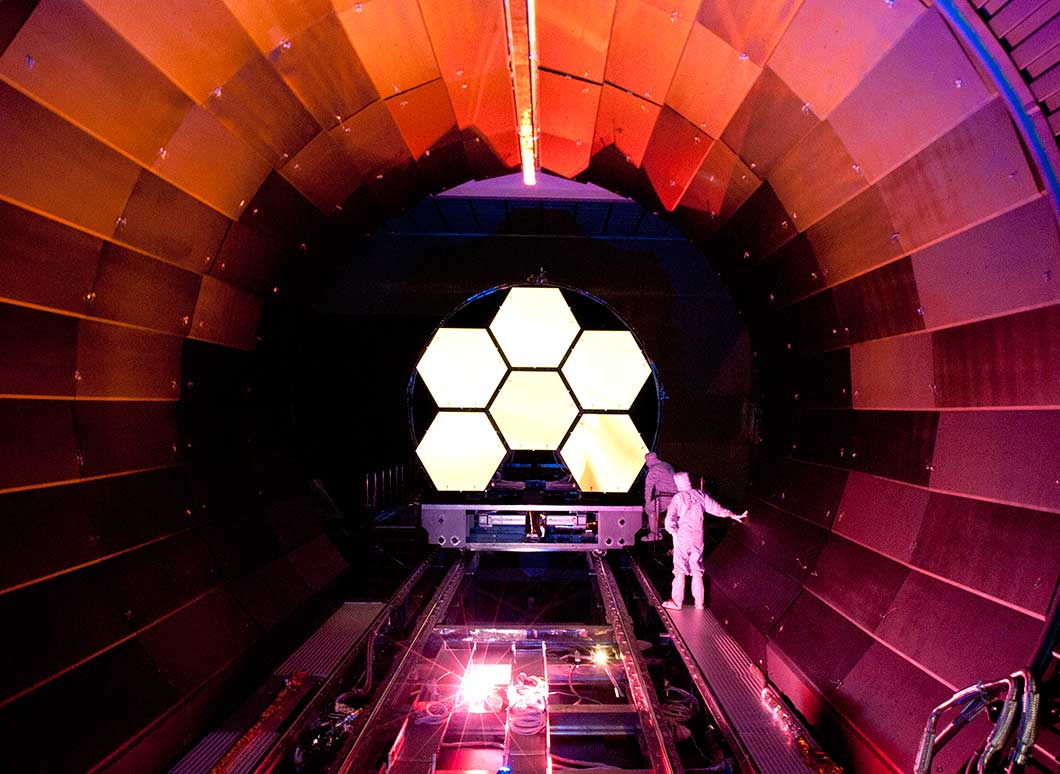
These days, Barto’s work hours are filled with preparations for telescope-level optical testing and completing the final hardware. By the end of 2015, the mirrors will be installed and integrated into the backplane that gives them a stable spine and that also carries additional optics and instruments for the telescope. Afterward, Barto and her colleagues at Ball, Northrop Grumman and NASA will test the mirrors in a huge thermal vacuum chamber, simulate their in-orbit alignment and analyze their range of performance.
Barto takes satisfaction in seeing a long-term project from initial concept through final product, but she admits the wait for JWST’s launch has been long. When it finally happens, she expects to experience a mix of excitement and pride. “I’ll be proud that we’ve launched and gotten through all the challenges,” says Barto. Even though she finds the most satisfaction in the day-to-day problem solving, she admits, “I’ll be excited when we finish on-orbit optical alignment and see the first images.”
